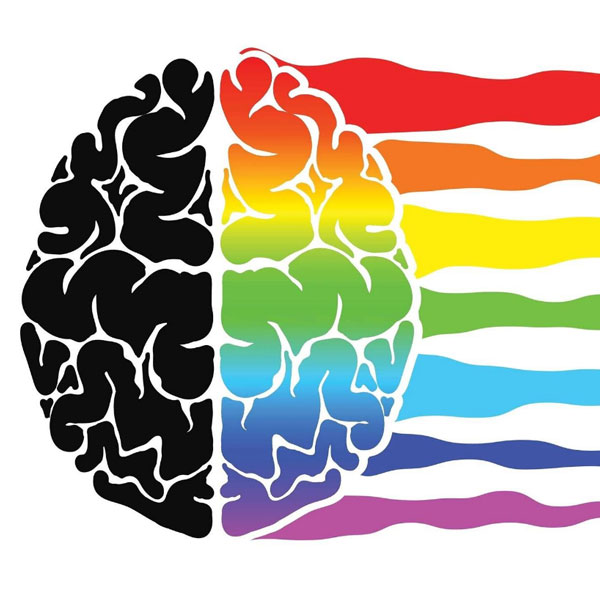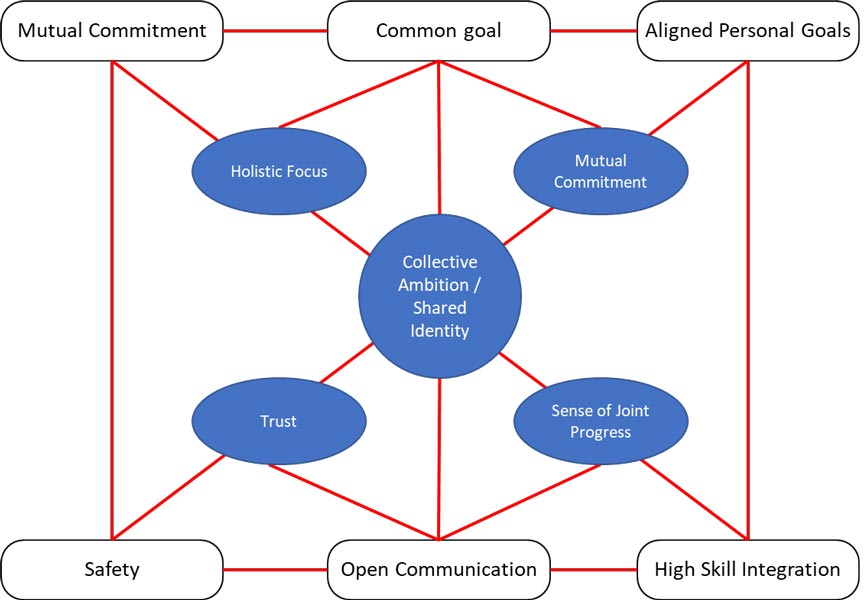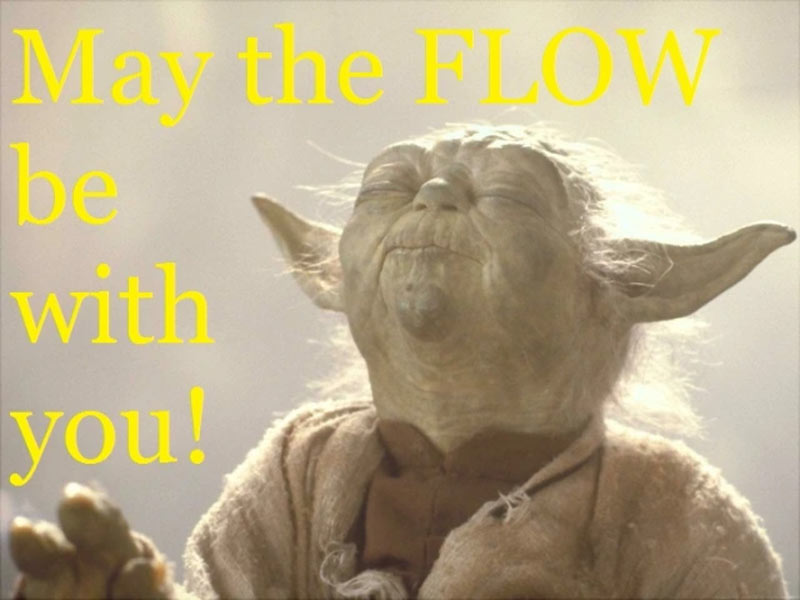
Flow Meraki Sahmadi (Part 2)
Flow, enlightenment, meraki: are they also possible for the team? After having explored the meaning of these fascinating words for the individual, we will talk about a research, which we met with @Paolo Chinetti, on the experience of flow in teamwork. It is possible, and the research results are particularly encouraging and very accessible.
While reading the article You will realize that, in the end, it is a lot about implementing a series of expedients and methods that we have already encountered in our journey on teamwork!
Enjoy this reading and take a look also at ilteamgiusto.it, our new webpage in English and italian!
Flow for teams, does it still make sense? (Flow: Part 2)
Three researchers, Jef J.J. van den Hout, Orin C. Davis and Bob Walrave, developed a variation on the theory of Flow (see one of our previous articles) dedicated to teams. At first, I thought it could be impossible but let’s see it together and then decide…
First of all, let’s rephrase the concept of flow to teams: “team flow creates a group-level state in which all participating team members are completely involved in their common activity, and are working together intuitively and synergistically towards the common purpose.”.

The authors tell us that there are some precursors or preconditions to the manifestation of the flow (remember the 8 common element of flow that Mihaly Csikszentmihalyi identifies):
- The existence of a common goal: the common goal has to be clear and meaningful to all team members (but also compatible/consistent with members’ individual and personal goal(s) and values and growth-promoting).
- The presence of personal goals that contribute to achieving the common goal, these goals help in creating what the authors call ‘clear proximal goals’ for each of them.
- The integration of complementary, high-level skills existing within each individual team member. While cognitive processes, affective states, patterns and behavioral processes emerge in the ecosystem of the team, team members deploy on a challenging task/role that suits their preferences, talents, knowledge, and skills. This requires both alignment and multifunctional abilities in the team to be present. “In this way, the individual forces are optimally utilized and combined to create a degree of synergy (win-win) through their collaboration”.
- Open and trans-parent communication ensures that all team members know exactly how each delivers his/her contribution to the team. Quick/immediate feedback is essential in flow state development. As always, the feedback given must be clear, constructive, and encouraging.
- A psychologically safe environment to perform personal tasks in the interest of the team. Tas the flow develops while achieving a task, a safe environment is a condition for free learning, and particularly for learning from failures by taking calculated (or not) risks. “Safety within the team environment decreases each individual team member’s worries about his/her performance on the task at hand. This uses the potential for failure to push the group towards the flow state rather than being intimidated by it.”. This is how the focus stays on the team, and on the individual instead of getting dispersed taking care of what ‘others might think’.
- The responsibility to engage with each other to achieve the desired common goal with devotion and dedication. It is mutual support embedded in team dynamics. ”When mutually committed, team members are intensely involved in a shared, meaningful activity and are able to remain concentrated on this activity as long as necessary to achieve the common goals.”.

What are the benefits, or if You like, what are the gains when the team ‘flows’?
- A clear shared identity. The researchers define a shared identity as “the collective ambition of the team, constituting the reason of team existence” and this is about the will to act as a team in the name of shared values, goals, intrinsic motivation. This is also called interpersonal flow.
- A sense of unity. The perception and belief that together the team defines a unity by expressing the collective ambition of the team. We see a similar concept in the science of team science when cohesion and climate are referred. Moreover, this notion is connected with the one of self-consciousness that we described in the article Flow – Part 1: not paying attention to one’s own needs in favor of focusing on the activity at hand.
- Trust. Trust arises because people feel safe to act and the communication channels are open and well tested/structured. It is an essential prerequisite that makes possible a climate for continuous feedback.
- Sense of joint progress. This is about “the shared feeling of making progress together in achieving the goals and the cooperation with each other”. Communication is fluid and everybody knows the status of the others and reciprocal monitoring makes possible to know “what should be the next joint action (integration of high skills) in achieving both their common and personal goals”.
- Holistic Focus. It is the realization that there is a collective consciousness among team members to promote the collective ambition.

So, what about creating the right ‘team flow environment’? In the end, this is the advice that we would like to get from the research of our three authors. Jef J.J. van den Hout, Orin C. Davis and Bob Walrave list these 9 suggestions that somehow are not surprising and recall the background that we presented with @Paolo Chinetti in our book #ilteamgiusto. Let’s see them closer.
- Identify team members’ underlying motivations, shared values, and unifying strengths that united them as a team and formulate a collective ambition.
- Align from the collective ambition a concrete common goal that is achievable and challenging and can be reached in a foreseeable period.
- Set for each member of the team an aligned personal goal that also fosters meaning, growth, and intrinsic motivation for each person.
- Derive from the common and personal goals the tasks (roles) and responsibilities into a clear process (strategy) in which each team member is able to execute his or her personal strengths where together those strengths form a unified force (integration of high skills).
- Optimize mutual feedback on process and outcome so that everyone knows how (s)he is doing, as well as the team as a whole (open communication).
- Create an environment in which one feels safe to act by eliminating unacceptable risks and supporting each other with positive and encouraging feedback (safety).
- Hold each other accountable to accomplish the tasks successfully with dedication and vigor. Keep each other on track by coaching each other on the task (feed forward) and take care of the presence of the precursors for team flow (mutual commitment).
- Allow the team to function on its own (autonomous) and share experiences of unity, trust, focus, progress, and identity and sometimes magic moments like team flow.
- Evaluate, reflect, and enjoy the moments of team flow and reconvene for new collective ambitions and shared goals.

Does this resonate to You? Can You find in the background some assumptions that come from the Agile approach, scrum and similar frameworks. In the end this is very close to the reccomandation that Mihaly Csikszentmihalyi gave us originally in flows:
- Set goals.
- Engage in the activity!
- Pay attention to what is happening.
- Be fully committed to your goals.
- Find satisfaction in immediate experience.
I personally would stress that at the team level one shouldn’t lose the ‘autotelic approach that Mihaly Csikszentmihalyi put at the foundations of the flow experience:
- you keep the focus on what you’re doing, how you’re doing it and how far it is from how you should do it. Invest your energy capital in the system in which you belongs while you act to achieve the goal, integrate yourself into the environment rather than separating from it, and
- the key element of the optimal experience is that it is an end in itself (autotelic). Even if it was initially undertaken for other reasons, the activity in which we immerse ourselves fully becomes its own reward.”.
Do not underestimate that the individual flow condition is a prerequisite for the team flow condition! And consequently, out three authors outline exectly this concept in their conclusions:
- “it is an individual team member who experiences the mental state of flow by executing his/her personal task;
- the team member derives flow from the team dynamic which is structured by a collective ambition that set the precursors which are shared goals (team and personal), high skill integration, open communication, safety, and mutual commitment; and
- team members share a dynamic that reflects a state of flow as a whole, which is characterized by five specific components: trust, holistic focus, a sense of unity, a sense of joint progress, and a shared identity.”.
Not so often we experience a flow state in our day to day team life, exactly as, years ago, Tuckman outlined that the ‘performing’ level of his evolutionary team model (do you remember the forming, storming, norming, performing states?) wasn’t so common or easy to get. May the flow be with You!
